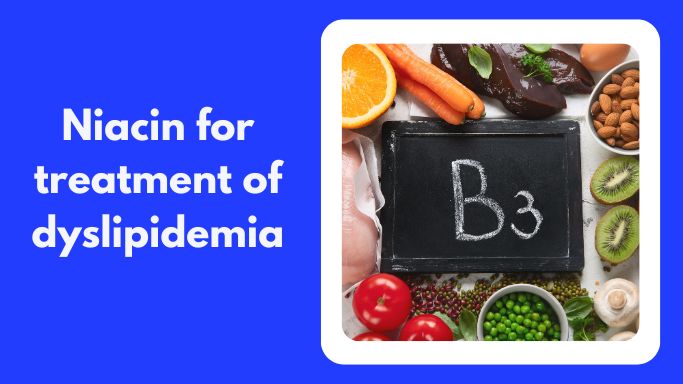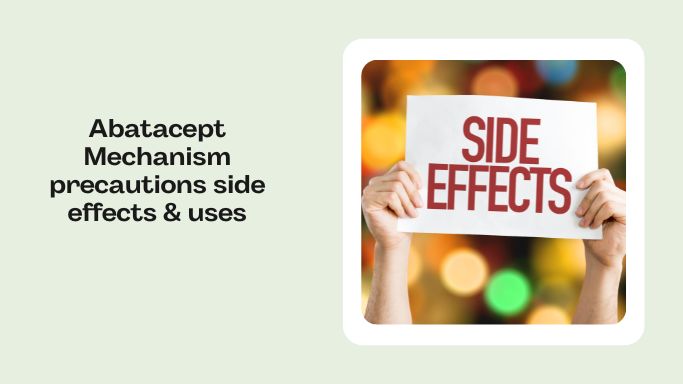Niacin for treatment of dyslipidemia let us discuss about niacin. Niacin is one of the vitamin belonging to B complex family. It is considered as vitamin B3, which is also called as nicotinic acid. So simply, niacin is a pyridine three carboxylic acid.
This nicotinic acid can also act as antihyperlipidemic agent as niacin is going to reduce the total cholesterol levels. And it can also impact one of the pathological cholesterol, LDL cholesterol. So niacin reduce the bad cholesterol. At the same time, this drug is going to increase the HDL cholesterol, which is considered as good cholesterol.
It can also reduce the triglycerate levels. Thereby, it can reduce the VL DL levels. By all of these actions, niacin can act as antihypothi lpidemic agent. It can be given either alone or in combination with other drugs in order to reduce the risk of atherosclerosis. So niacin can be used as a drug in the treatment of dyslipidemia, particularly type 2A dyslipidemia.
which is associated with elevated levels of LDL cholesterol, and type 2b dsLipidemia, which is associated with elevated levels of both LDL cholesterol as well as V LDL cholesterol. Since this drug can reduce both LDL as well as triglyceride levels, it can be used in the treatment of type 2b dsLipidemia.
And this drug can also reduce the risk of myocardial infarction, stroke. So this drug can be combined with other antihyperelimin mix such as statins in order to reduce the risk of atherosclerosis. So today in this , we are going to see how this drug acts, what are the important precautions, side effects, doses, all these things we will discuss in this . Niacin is having a good absorption.
Niacin for treatment of dyslipidemia
Around 60 to 80 % of the drug can be absorbed easily. But in order to increase the absorption, this niacin should be administered along with a low fat snacks or meats, which increase the absorption, thereby increase the bioavailability of this drug. So with low fat snacks or meals, niacin should be administered in order to produce effective response. Now, let us see how this drug acts. This is the adipose tissue.
Within the adipose tissue, cyclic KMP plays an important role. It can control the metabolism of triglycerides. These triglycerides can be converted into free fatty acids in presence of cyclic KMP. So triglycerides are converted to free fatty acids along with release of glycerol. Here, free fatty acids are more important because they are going to be taken by the liver.
Now, free fatty acids are going to be transported into the liver where they are going to be stored into the V LDL. Now, liver can release the V LDL into the bloodstream. And now this V LDL can be converted into LDL in this way. But increased lipolysis within the adipose tissue results in the increased production of V LDL and LDL. But this lipolysis can be controlled by one of the receptor present on the adipose tissue, HM 74A.
This is a G protein couple receptor associated with alpha, beta, gamma subunits. Now, niacin can bind to this receptor. By binding to this receptor, it produce the inhibition of adenylal cyclase system. When this adenylal cyclase is going to be inhibited, the ATP is somewhat less converted into cyclic KMP.
So this results in the decreased cyclic KMP levels, which reduce the lipolysis. Thereby, it reduce the uptake of free fatty acids into the liver, which results in the decreased production of VL DL and conversion into LDL. In this way, niacin can reduce the lipolysis within the adipose tissue, which reduce the production of VL DL as well as LDL into the bloodstream. So this results the overall reduction in the total cholesterol levels, which reduce the risk of atherosclerosis.
Now, let us the precautions of this drug. One of the important precaution of niacin is that this drug can increase the levels of uric acid. So uric acid levels are excessively increased in places of niacin, which may increase the risk of prescription of gout. So this drug should be carefully given on those patients who are having more risk for production of gout or in the patients with elevated uric acid levels.
Similarly, when this niacin is combined with statins, it can increase the risk of rhabdomyosis, the dissolution of the mussel fibers, which is mainly produced by statins. And this side effect is further enhanced by niacin. And any symptoms such as muscle weakness, fatigue should be thoroughly checked in order to avoid development of rhabdomyosis. Similarly, niacin can increase the liver dysfunction.
Particularly, this is more observed when this drug is combined with statins because statins can also increase the liver dysfunction. So in the patients with any symptoms of jaundice or Pepticulcers, this drug should be carefully given because these conditions further increase the liver dysfunction. What are the side effects?
The important side effect of this drug is the headache. Since this acts as a vasodilator, by increase the prostate, the Glandin release, it can increase the headache and it can also produce flushin g, resulting in the redness of the face, some itching sensation, and pruritic conditions can be produced by this drug.
In order to avoid this flushin g, extended release tablets are used, and it can also be controlled by administration of aspirin 325MG before 30 minutes, which reduce the flush ing produced by niacin. Other side effects mainly include dizziness, tachycardia, which is because of reflex action, some chills, excessive sweating, and peripheral edema can be observed with this drug. How it is given?
This drug is given as external release tablet. Even normal tablets are available, but external release tablets are having less flush ing, improving the patient compliance. Initially, this drug is given at a dose of 500 mg. The dose is going to be maintained up to four weeks. And after four weeks, additional dose can be combined such that the dose may be slowly escalated for every four weeks, and a maximum dose of this drug is around 2,000 mg.
So that’s about this drug, niacin, which is a vitamin belonging to the B complex family. And it is also considered as vitamin B3 or nicotinic acid. This nicotinic acid can also act as antihyperlipidemic agent as it reduce the LDL cholesterol, increase the HDL cholesterol, and it also reduce the VL DL and trichlorides. By all of these, it can reduce the total cholesterol within the body.
So this drug can be combined with other drugs such as statins in the treatment of dyslipidemia, which is associated with elevated levels of LDL as well as V LDL. But when it is combined with the statins, the development of rhabdomyosis or liver dysfunction should be thoroughly checked. And this drug can produce some flushing and headache.




